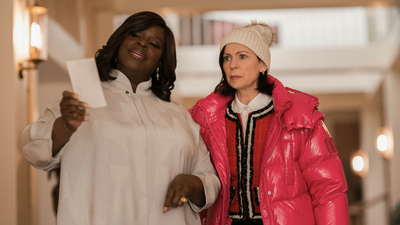
The Gleam and the Grime: Where Elsbeth Unearths Her Cases (and the Whisper of MD-07)
The world of Elsbeth is a vibrant, often surreal kaleidoscope of New York City’s elite, where high-stakes ambition meets low-down murder. It’s a show that delights in the “howcatchem” rather than the “whodunit,” revealing the killer in the opening act and then letting the delightfully eccentric Elsbeth Tascioni dismantle their meticulously constructed lies. To ask where its cases are inspired is to peel back layers of contemporary culture, legal precedent, and the timeless allure of human fallibility. And in the enigmatic “md07,” we find a subtle prompt to consider not just the flashy crimes, but the systemic undercurrents that often feed them.
At its most immediate, Elsbeth‘s cases are a witty, satirical mirror held up to modern celebrity and influencer culture. New York, with its endless churn of public figures, serves as the perfect petri dish. Each week, Elsbeth finds herself face-to-face with a new iteration of the “untouchable”: the visionary tech mogul with a dark secret, the celebrated chef whose temper boils over, the lifestyle guru whose brand demands a perfect, unblemished narrative at any cost. These characters are instantly recognizable archetypes from our newsfeeds and tabloids. The inspiration isn’t a direct retelling of a specific scandal, but rather a distillation of the types of scandals that dominate our attention: the desperate lengths people go to protect their public image, the blurring of lines between persona and reality, and the terrifying power of a well-curated lie. The murders often stem from a perceived threat to this fragile facade – a secret exposed, a reputation jeopardized, a carefully constructed illusion about to shatter.
Beyond the glitz, the show masterfully draws from classic detective fiction tropes, filtered through a contemporary lens. While we know the killer, the essence of the “locked room” or the “perfect crime” remains. Elsbeth’s genius lies in seeing the seemingly innocuous details, the tiny inconsistencies that everyone else overlooks. This observational prowess is a direct descendant of Sherlock Holmes’s deductive reasoning or Columbo’s understated brilliance. The cases are inspired by the mechanics of a clever murder: alibis built on shaky ground, technological misdirections, psychological manipulation, and the meticulous planning that inevitably leaves one tiny, fatal flaw. However, Elsbeth updates these classic structures with modern tools: social media timelines become crucial evidence, smart home devices betray secrets, and the digital footprint becomes as telling as a muddy boot print.
And then, we consider the “md07.” While not an episode number or a direct case file, “MD-07” often refers to Management Directive 715 (MD-715) within U.S. federal EEO (Equal Employment Opportunity) regulations, addressing systemic issues and preventing discrimination. While Elsbeth‘s cases are individual crimes, this prompt subtly nudges us towards the underlying systemic and institutional failures that often provide the backdrop, or even the motive, for the show’s murders. Many of Elsbeth’s cases, beneath their surface glamour, hint at a broader corruption: the abuse of power within a corporation, the cutthroat internal politics of a prominent law firm, the exploitative nature of certain industries, or the way powerful individuals can manipulate systems meant to protect the vulnerable. The “md07” suggests that the show’s true inspiration isn’t just about catching a killer, but about Elsbeth, in her unassuming way, shining a light on the environment that allowed such a crime to germinate – an environment where ethical directives might exist on paper but are routinely ignored in practice. She doesn’t just solve a murder; she often exposes a microcosm of injustice, a company culture, or a professional sphere where the rules have been bent and broken long before the fatal blow.
In essence, Elsbeth‘s cases are a delicious cocktail of contemporary anxieties, timeless criminal psychology, and the subtle, corrosive effects of systemic imbalance. They are inspired by the cacophony of modern life – the constant performance, the digital surveillance, the relentless pursuit of status – all viewed through the peculiar, incisive gaze of a woman who sees the world not as it appears, but as it truly is. From the cold glint of ambition in a celebrity chef’s eye to the quiet hum of a bureaucratic oversight, Elsbeth peels back the veneer, revealing the very human, often very dark, heart of the matter. And in doing so, she reminds us that justice, even in the most dazzling of cities, still relies on someone noticing the small, telling detail that everyone else has missed.
